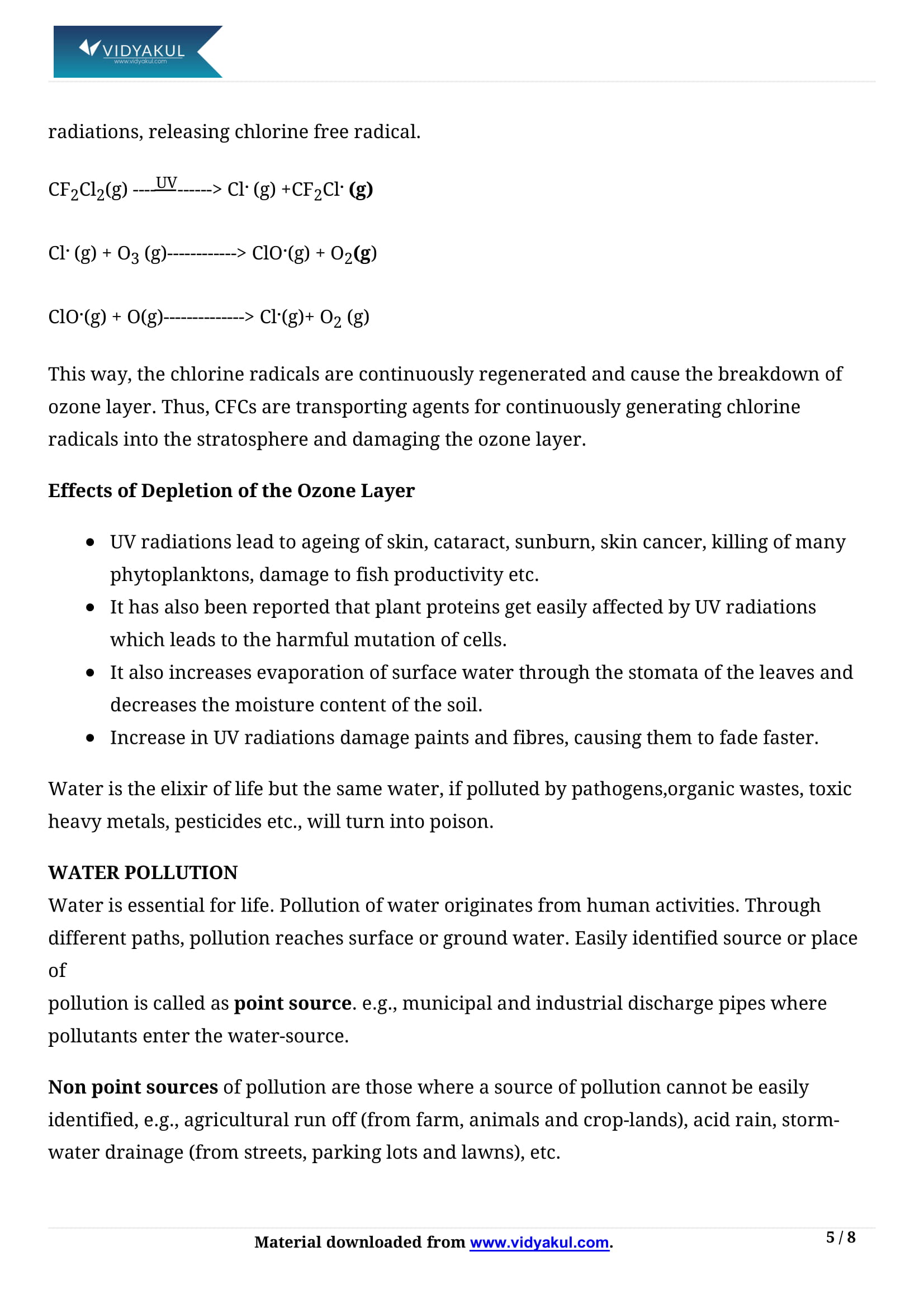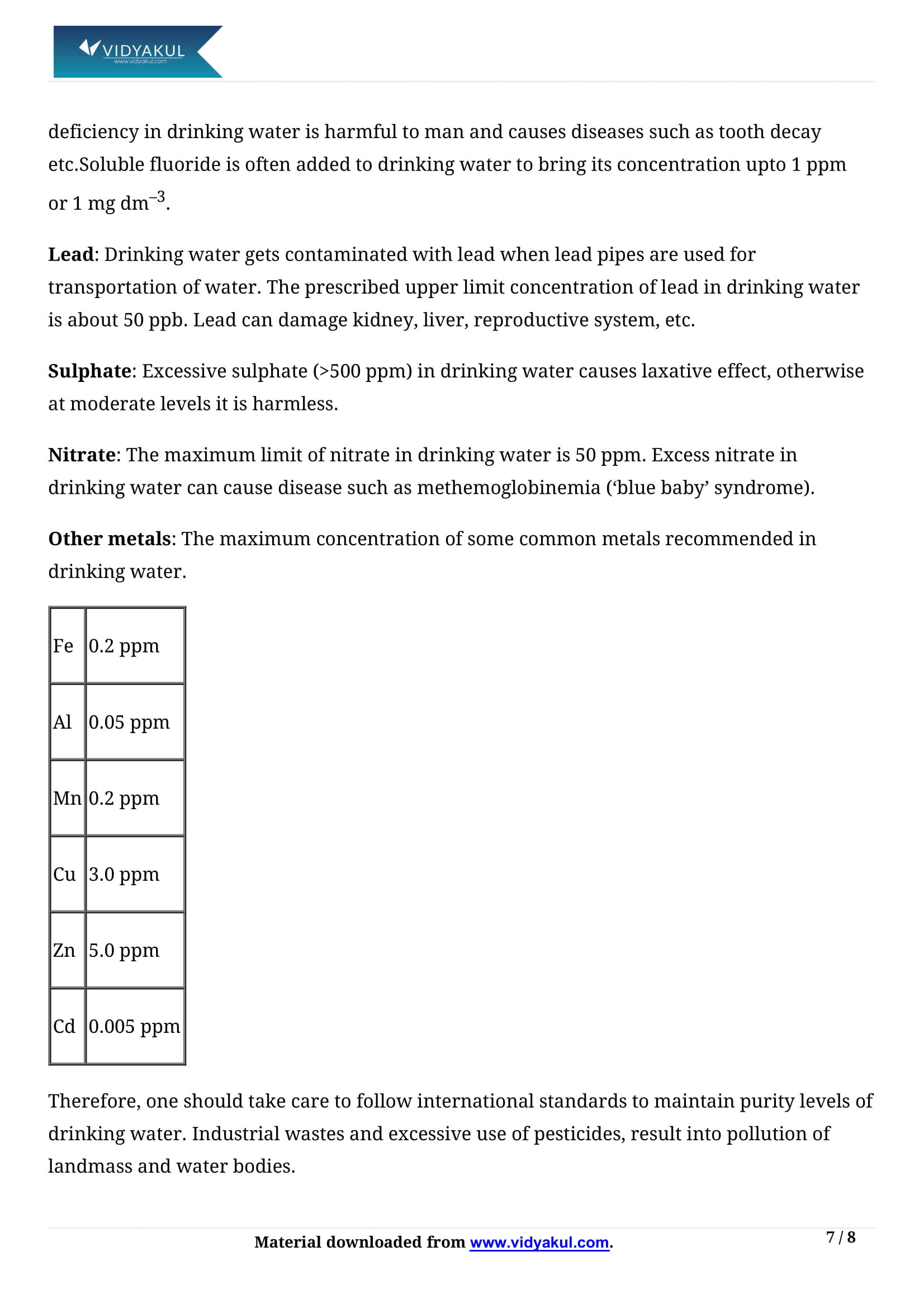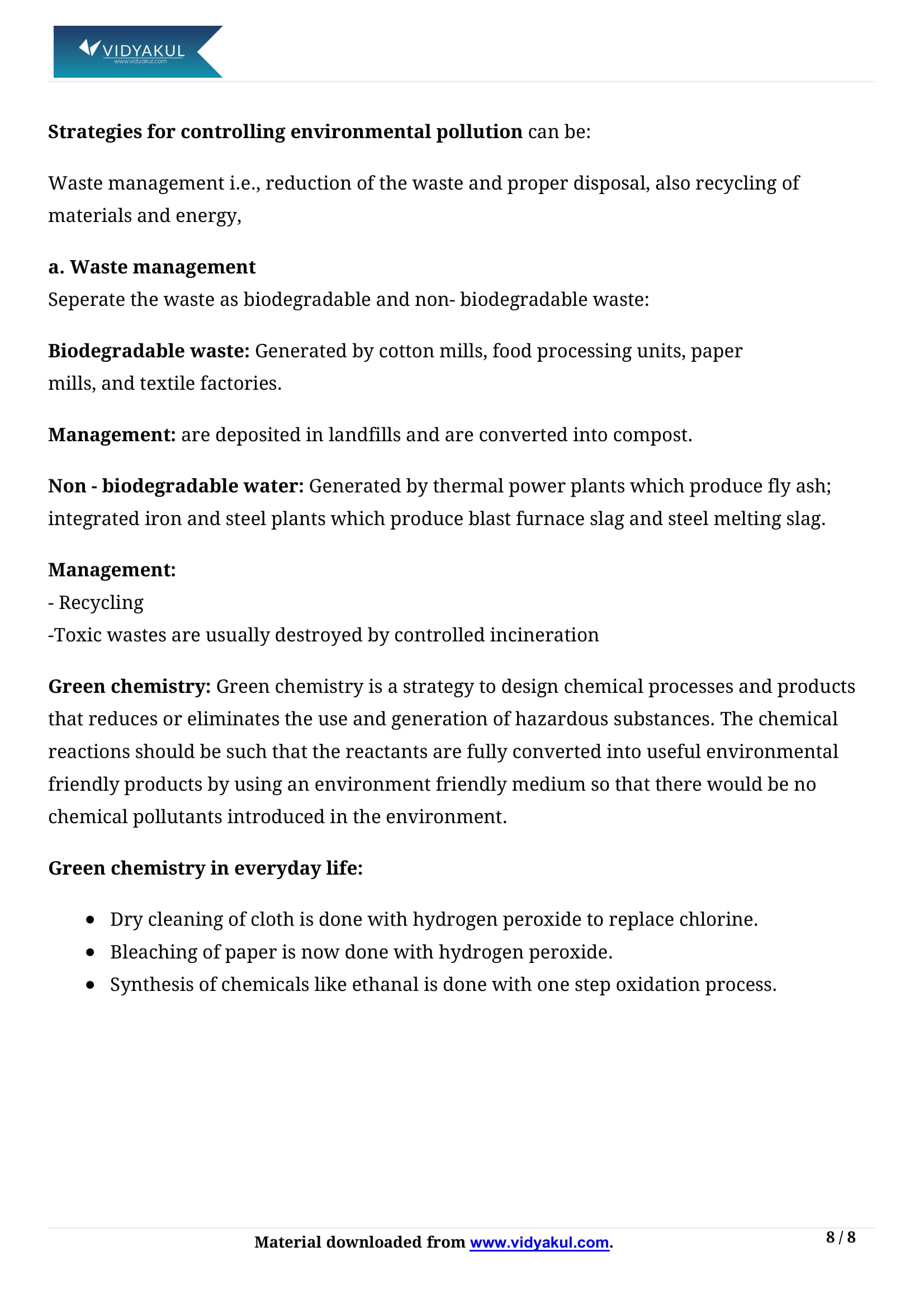Environmental Chemistry Class 11 Notes

Chapter 14 Environmental Chemistry
Environmental chemistry or environmental science is an important chapter for 11th graders because it deals with environmental topics from a chemistry perspective. This chapter also deals with the study of the responses, origins, effects and essentially fate of species in the environment. Also, the topics covered are very broad and students may not remember all the details, which can affect their productivity.
With this in mind, our experts have compiled the Grade 11 Chemistry Chapter 14 notes- Environmental Science to provide a solid and solid knowledge of all the subjects. The information provided is more relevant and relevant and these notes will serve as the primary reference for understanding this chapter. In addition, students can study more effectively and score better in exams.
NCERT notes will help students in their final exam preparation as well as different entrance examinations like JEE Main and NEET. Detailed and step-by-step explanations have been given for all of the NCERT notes. Continue reading to know more.
CBSE 11th CHEMISTRY CH-14
Points to Remember
The lowest region of the atmosphere is the troposphere. Organisms such as man, animal, plants, etc. exist here. This pollution is caused due to oxides of nitrogen, halogens, sulfur, carbon, etc.
The layer above troposphere about 50 km above sea level is the stratosphere. One of the important constituents of this layer is Ozone.
The thickness of the ozone layer in the upper atmosphere of the earth slowly starts decreases due to the industrial gaseous chemical compounds such as bromine or chlorine as well as various human activities. This is called depletion of the ozone layer.
The troposphere which is the lowest layer of the atmosphere, as well as the earth’s surface, warms up due to the existence of carbon dioxide, water vapour, methane, etc. This is called the greenhouse effect.
These are produced when coal containing sulphur is burnt.
Viable Particulates: They are minute living organisms that are dispersed in the atmosphere. e.g., bacteria, fungi) moulds, algae etc.
Presence of undesirable materials in water which is harmful for the human beings and plants is known as water pollution. Normal properties of the water can be changed by the presence of these foreign materials.
Topics and Sub-topics
To make learning more fun and easier, CBSE Revision Notes for Class 11 Chemistry Chapter 13 Hydrocarbons is available on the Vidyakul for free download. Students can also refer to these PDF notes, which contain detailed explanations of all the important topics in the chapter.
When talking about hydrocarbons in chemistry, we can interpret them as organic compounds consisting of the elements hydrogen and carbon. However, when we study this topic in 11th grade, found in CBSE chapter 13 book, we have to learn various things like classification of hydrocarbons, alkenes, alkanes, alkynes, toxicity and carcinogenicity , and understand equations, solve various problems, and more.
Before you go to NCERT notes, let’s see the list of topics that you are going to study in this chapter:
Frequently Asked Questions
What is ‘Green chemistry’?
Green chemistry is the design of chemical products and processes that reduce or eliminate the generation of hazardous substances.
What are the main reasons for ‘Water pollution’?
1. Rapid urban development 2. Improper sewage disposal 3. oil spills 4. chemical waste dumping 5. radioactive waste discharge
What is ‘Greenhouse effect’?
The effect of this is to warm the Earth’s surface and the lower atmosphere.
Practice Questions
What is Biochemical Oxygen Demand? Explain in detail.
Define smog? Distinguish between classical smog and photochemical smog?
Which gas is more dangerous? Carbon monoxide gas or carbon dioxide gas? Explain why?
List the harmful effects of photochemical smog and explain measures to control the same.
The lowest region of the atmosphere is the troposphere. Organisms such as man, animal, plants, etc. exist here. This pollution is caused due to oxides of nitrogen, halogens, sulfur, carbon, etc.
The layer above troposphere about 50 km above sea level is the stratosphere. One of the important constituents of this layer is Ozone.
The thickness of the ozone layer in the upper atmosphere of the earth slowly starts decreases due to the industrial gaseous chemical compounds such as bromine or chlorine as well as various human activities. This is called depletion of the ozone layer.
The troposphere which is the lowest layer of the atmosphere, as well as the earth’s surface, warms up due to the existence of carbon dioxide, water vapour, methane, etc. This is called the greenhouse effect.
These are produced when coal containing sulphur is burnt.
Viable Particulates: They are minute living organisms that are dispersed in the atmosphere. e.g., bacteria, fungi) moulds, algae etc.
Presence of undesirable materials in water which is harmful for the human beings and plants is known as water pollution. Normal properties of the water can be changed by the presence of these foreign materials.
What is ‘Green chemistry’?
What are the main reasons for ‘Water pollution’?
What is ‘Greenhouse effect’?
What is Biochemical Oxygen Demand? Explain in detail.
Define smog? Distinguish between classical smog and photochemical smog?
Which gas is more dangerous? Carbon monoxide gas or carbon dioxide gas? Explain why?
List the harmful effects of photochemical smog and explain measures to control the same.
Learn more about in Environmental Chemistry Class 11 Notes pdf.
Download this solution for FREE Download this PDF











